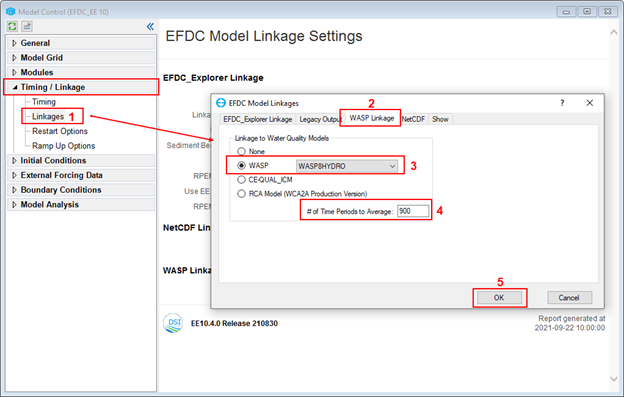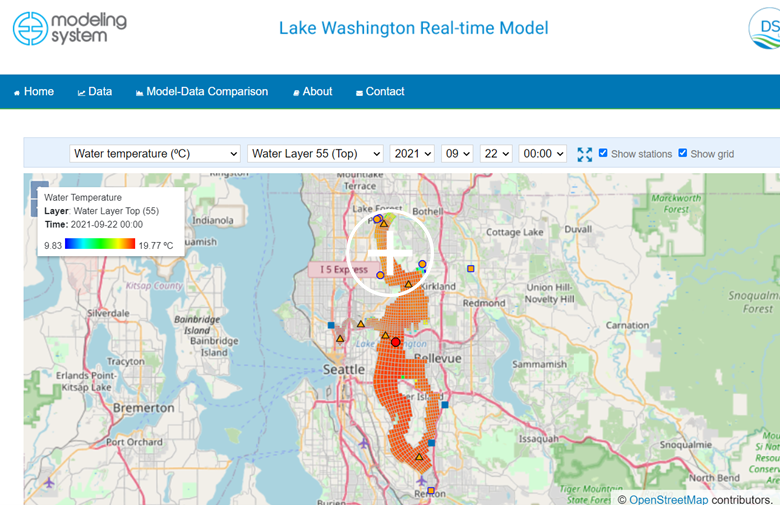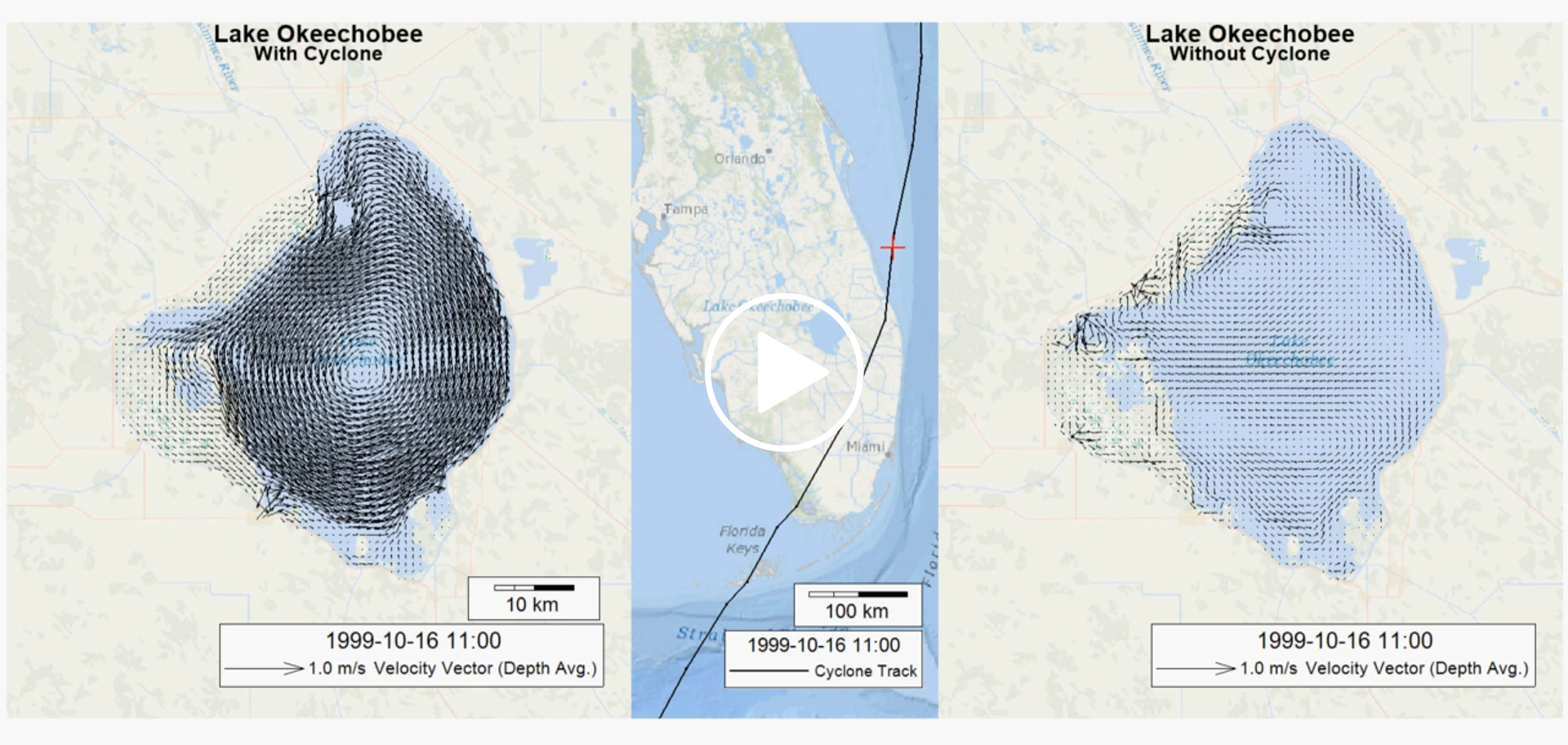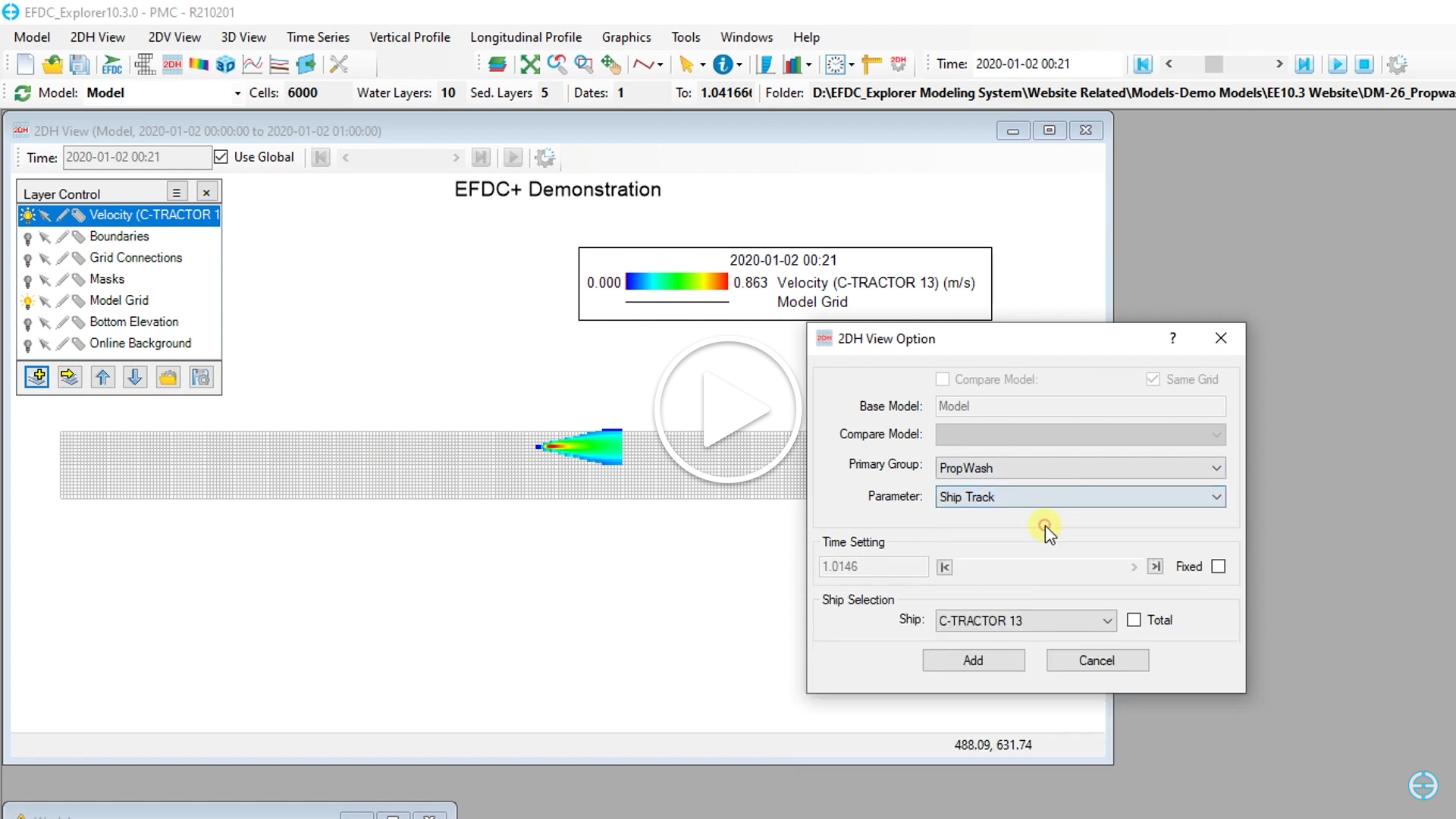# EFDC+ Enhancements
# NetCDF UGRID
EEMS now supports writing the new unstructured (or flexible mesh) model data format for NetCDF, called UGRID. Although UGRID is designed for unstructured grids, the advantage for EFDC+ and structured grids is that it writes output for only the active grid cells, rather than the full I, J grid required by web map services for displaying environmental data such as ncWMS. Furthermore, the structure of the output variables is clearly defined, along with the variable name and units. This predefined structure allows users to process EFDC+ output using third-party software easily. UGRID is also based on the CF Metadata Conventions, but this approach currently assumes that the horizontal topology should be determined from the cell index of the EFDC+ grid rather than the I, J indices of the structured grid. The UGRID approach adds conventions to specify the topology for unstructured (e.g., triangular) grids. You can read our blog (opens new window) to learn more about this option. EEMS can also write high-frequency snapshots for NetCDF.
The UGRID format was used in the recently released Lake Washington Real-time Model that can be viewed here (opens new window). UGRID is especially suited for use with real-time model simulations as it integrates well with web map services such as Google Maps and OpenLayers.
Lake Washington Real-time Model using NetCDF UGRID format
# WASP8 Linkage
EEMS has now been enhanced to write the hydrodynamic linkage files for the latest Water Quality Analysis Simulation Program 8 (WASP8) version. WASP is a dynamic, spatially-resolved, differential mass balance fate and transport modeling framework. WASP is used to develop models to simulate concentrations of environmental contaminants in surface waters and sediments. As a modeling framework, it allows users to construct the model design appropriate for the system of interest, in one, two, or three dimensions. WASP allows for time-varying processes of advection, dispersion, point and diffuse mass loading, boundary conditions and boundary exchange. WASP can be linked to hydrodynamic and sediment transport models, or the hydrodynamic algorithms within the WASP framework can be used. WASP8 is 64 bit, and runs faster than the previous iterations. With the release of EEMS11, users can build a hydrodynamic model in EEMS and export this to import it into WASP7 or WASP8 for simulation of WQ. Our testing indicates the results are very similar to the internally coupled EFDC+ WQ model.
For more information, you see our technical documentation, which describes the step-by-step procedures needed to create an EFDC hydrodynamic model results binary file (.HYD) that is formatted for linkage as an input file to the WASP8 water quality model. This technical memorandum provides the information needed and example problems to show the step-by-step procedures required to successfully create and apply an EFDC project to export a hydrodynamic file (.HYD) for linkage as an input file for a WASP7 water quality model project. The description contained in this document assumes that the user has completed the setup of a working EFDC project for a hydrodynamic model and wishes to generate a binary HYD file as input to a WASP7 water quality model.

WASP Linkage Output Setting from EE
# Tropical Cyclone Tool
EEMS11 features a new tropical cyclone module that enables you to model the hydrodynamic consequences of cyclones efficiently. Numerically modeling the influences of a tropical cyclone requires inputs for both pressure and wind fields. Due to a cyclone’s rapid rotation and shifting nature, these fields need to be provided at high-frequency intervals, so the standard spatial interpolation is not appropriate. File input for these fields is not an efficient approach since it requires an external tool to generate the fields and requires considerable disk space to save the fields. EEMS11 includes new features to address these issues, which have not always been adequately addressed in other modeling software.
With this new module, EFDC+ will internally generate the cyclone fields during the simulation using very lightweight cyclone track data and a parametric cyclone model. Four existing models address tropical cyclones: Holland (1980), Hubbert et al. (1991), McConochie et al. (2004), and Willoughby et al. (2006). Learn more on our recent blog post and review guidance documentation here. An example model can be downloaded and run with EEMS demo mode. You can review our white paper or the EFDC + Theory Document for a detailed description of the models.
Air pressure and wind fields in the Gulf of Mexico off the Louisiana coast on August 27, 2005, shown with the track of Hurricane Katrina
# Wind drag
There is a new option in EFDC+ version 11 that allows a user-defined wind drag relationship. The wind drag relationship is configured by the user based on the lower and upper bound wind velocities of both the linear wind drag relationship and the linear wind drag relationship.
# EFDC_Explorer Enhancements
Apart from the changes to the EE interface for the new EFDC+ functionality, a number of minor enhancements have been made to EFDC_Explorer.
- Velocity Rose
- Coordinate System improved for OpenGL
- 3D Visualization Improvements
- Propwash Enhancements
- Do/Undo
- Fill missing ship track data within a polygon
- Display options
User guidance on the Propeller Wash Module



